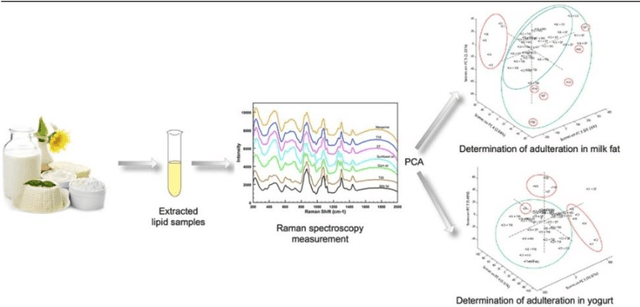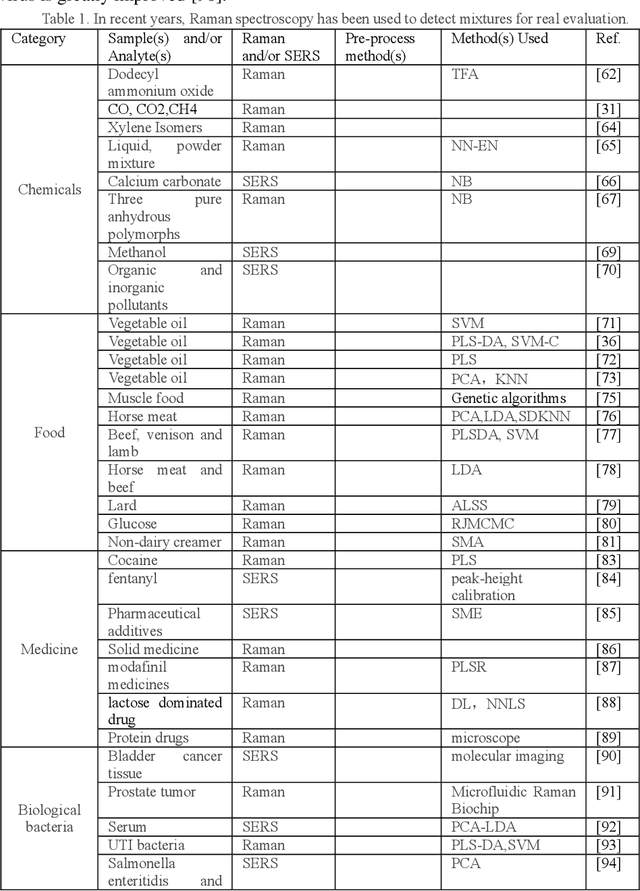A review of artificial intelligence methods combined with Raman spectroscopy to identify the composition of substances
Paper and Code
Apr 05, 2021


In general, most of the substances in nature exist in mixtures, and the noninvasive identification of mixture composition with high speed and accuracy remains a difficult task. However, the development of Raman spectroscopy, machine learning, and deep learning techniques have paved the way for achieving efficient analytical tools capable of identifying mixture components, making an apparent breakthrough in the identification of mixtures beyond the traditional chemical analysis methods. This article summarizes the work of Raman spectroscopy in identifying the composition of substances as well as provides detailed reviews on the preprocessing process of Raman spectroscopy, the analysis methods and applications of artificial intelligence. This review summarizes the work of Raman spectroscopy in identifying the composition of substances and reviews the preprocessing process of Raman spectroscopy, the analysis methods and applications of artificial intelligence. Finally, the advantages and disadvantages and development prospects of Raman spectroscopy are discussed in detail.
 Add to Chrome
Add to Chrome Add to Firefox
Add to Firefox Add to Edge
Add to Edge